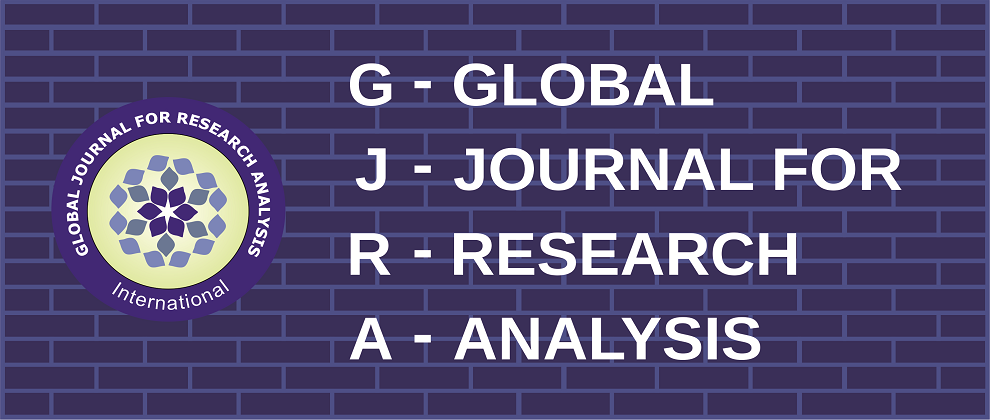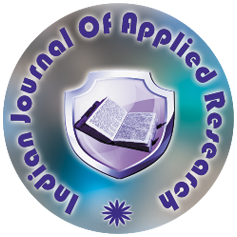Volume : 7, Issue : 3, March - 2018
Drug Utilisation pattern of antidiabetic drugs amongst obese diabetic patients in a tertiary care hoapital- an observational study
Dr Vartika Srivastava, Dr Sougata Sarkar, Dr Jyotirmoyee Jena, Dr Manjushree Mohanty
Abstract :
<p> </p> <p class="MsoNormal" style="text-align:justify"><span lang="EN-IN" style="font-size:12.0pt;line-height:115%;font-family:"Times New Roman","serif"">The principal aim of drug utilisation studies (DUS) is to facilitate the rational use of drug<span style="mso-spacerun:yes"> </span>in a population.DUS is an essential part of pharmacoepidemiology and pharmacoeconomic as it describes the extent,nature and determinants of drug exposure. Diabetes at present appears as a common non communicable disease. It leads to high morbidity and mortality due to the disease itself and its diverse complications like coronary artery disease, hypertension, renal complication, retinal damage, neurological disorders, incidence of stroke at different sites, generalised infections etc.</span><span lang="EN-IN" style="font-family:"Times New Roman","serif""> </span><span lang="EN-IN" style="font-size:12.0pt;line-height:115%;font-family:"Times New Roman","serif"">With such multifactorial background of high prevalence , progressive nature of the disease, availability of multiple therapeutic regimens prescribed on trial and error basis, the treatment is individualised and neither complete nor satisfactory. <b style="mso-bidi-font-weight:normal">Objectives:</b> This study was undertaken to analyse the current prescribing pattern in obese patients of type 2 diabetes mellitus with regard to drug/drugs precription<span style="mso-spacerun:yes"> </span>,dose, duration of treatment<span style="mso-spacerun:yes"> </span>and frequency of change of drugs. </span><b style="mso-bidi-font-weight:normal"><span lang="EN-IN" style="font-family:"Times New Roman","serif"; color:black">Methods</span></b><span lang="EN-IN" style="font-family:"Times New Roman","serif"; color:black">: </span><span lang="EN-IN" style="font-size:12.0pt;line-height: 115%;font-family:"Times New Roman","serif"">This is a<span style="mso-spacerun:yes"> </span>prospective, parallel group, c</span><span lang="EN-IN" style="font-family:"Times New Roman","serif"">omparitive observational study. </span><span lang="EN-IN" style="font-size:12.0pt; line-height:115%;font-family:"Times New Roman","serif"">The enrolled obese patients were divided as </span><span lang="EN-IN" style="font-family:"Times New Roman","serif"; color:#231F20">a)New diabetic b) Old diabetic</span><span lang="EN-IN" style="font-size:12.0pt;line-height:115%;font-family:"Times New Roman","serif"; color:#231F20">(<3 years duration). </span><span lang="EN-IN" style="font-family:"Times New Roman","serif";color:#231F20">Each </span><span lang="EN-IN" style="font-size:12.0pt;line-height:115%;font-family:"Times New Roman","serif"; color:#231F20">category was further divided into four subgroups accordi</span><span lang="EN-IN" style="font-family:"Times New Roman","serif";color:#231F20">ng to the treatment recieved a)Monotherapy-</span><span lang="EN-IN" style="font-size: 12.0pt;line-height:115%;font-family:"Times New Roman","serif";color:#231F20">only Metformin</span><span lang="EN-IN" style="font-family:"Times New Roman","serif"; color:#231F20"> b)Combination therapy- Metformin+</span><span lang="EN-IN" style="font-size:12.0pt;line-height:115%;font-family:"Times New Roman","serif"; color:#231F20">another antidiabetic groups,preferably sulfonylureas, alphaglucosidase in</span><span lang="EN-IN" style="font-family:"Times New Roman","serif"; color:#231F20">hibitors or DPP 4 inhibitors c)</span><span lang="EN-IN" style="font-size:12.0pt;line-height:115%;font-family:"Times New Roman","serif"; color:#231F20">Triple therapy( Metformin+SU+Voglibose or Gliptins or Glitazones)</span><span lang="EN-IN" style="font-family:"Times New Roman","serif"; color:#231F20"> d)</span><span lang="EN-IN" style="font-size:12.0pt;line-height: 115%;font-family:"Times New Roman","serif";color:#231F20">Insulin with other oral hypoglycemic drugs</span><span lang="EN-IN" style="font-family:"Times New Roman","serif"; color:#231F20">. </span><b style="mso-bidi-font-weight:normal"><span lang="EN-IN" style="font-size:12.0pt;line-height:115%;font-family:"Times New Roman","serif"">Results</span></b><span lang="EN-IN" style="font-size:12.0pt;line-height:115%;font-family:"Times New Roman","serif"">: In the study of prescribing pattern, it was observed that most prescriptions in this tertiary care hospital were found to be in compliance with the ADA guidelines. Metformin monotherapy was prescribed <span style="mso-spacerun:yes"> </span>as initial treatment. Sulphonylureas/ Gliptins / Alpha glucosidase inhibitors/<span style="mso-spacerun:yes"> </span>thiazolidinediones<span style="mso-spacerun:yes"> </span>were <span style="mso-spacerun:yes"> </span>used as second line therapy mostly anyone, <span style="mso-spacerun:yes"> </span>in addition to metformin or as monotherapy according to patient requirement, tolerability and cost.<b style="mso-bidi-font-weight: normal">Conclusions</b>: The antidiabetic medications prescribed in this hospital,were found to be in compliance with <span style="mso-spacerun:yes"> </span>ADA guidelines with metformin being the first line of treatment followed by sulfonylureas and alphaglucosidase inhibitors<o:p></o:p></span></p>
Keywords :
Cite This Article:
Dr Vartika Srivastava, Dr Sougata Sarkar, Dr Jyotirmoyee Jena, Dr Manjushree Mohanty, Drug Utilisation pattern of antidiabetic drugs amongst obese diabetic patients in a tertiary care hoapital- an observational study, GLOBAL JOURNAL FOR RESEARCH ANALYSIS : VOLUME-7, ISSUE-3, MARCH-2018


 MENU
MENU

 MENU
MENU

